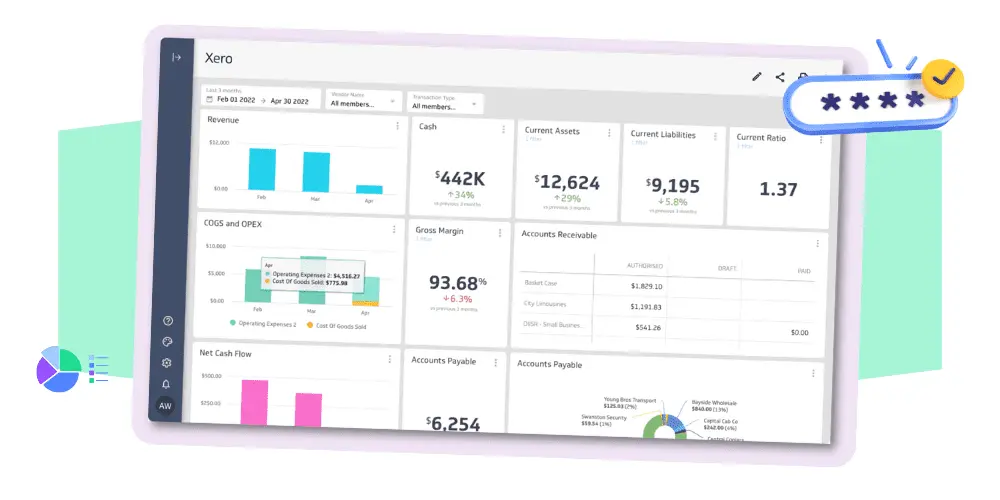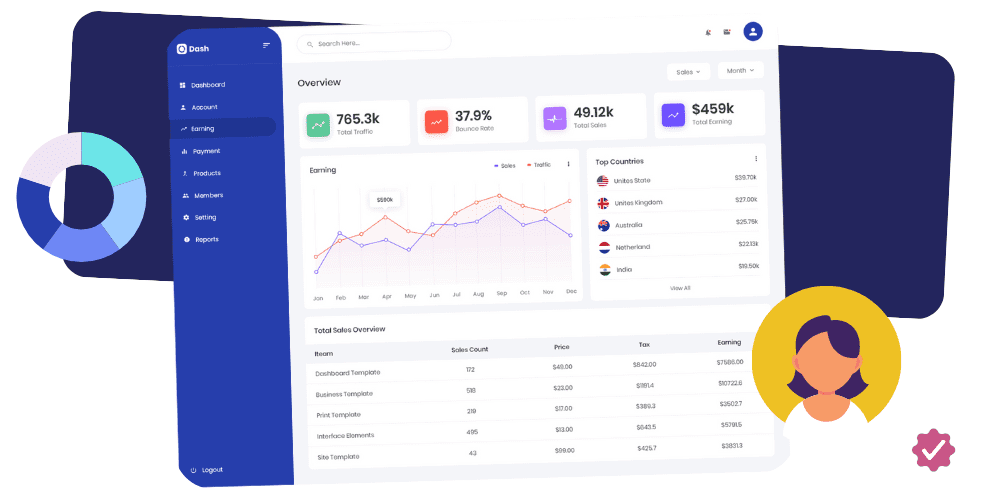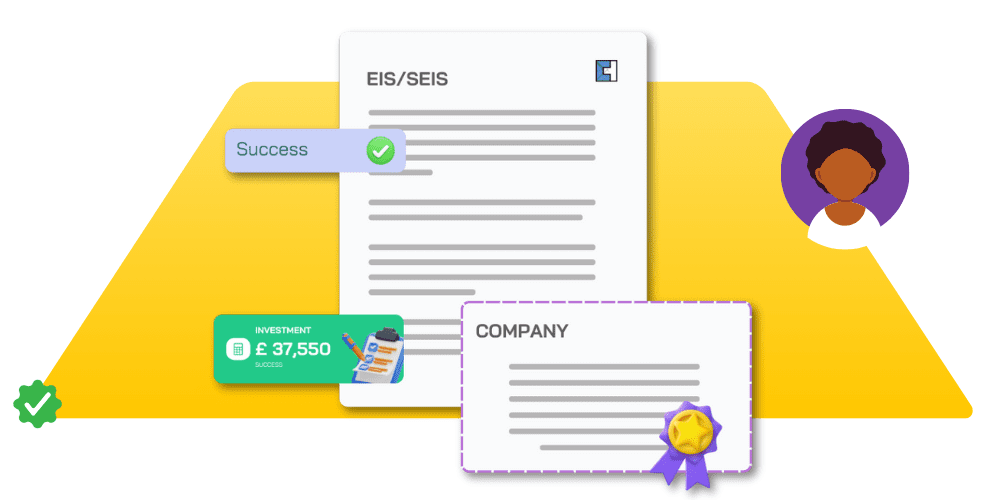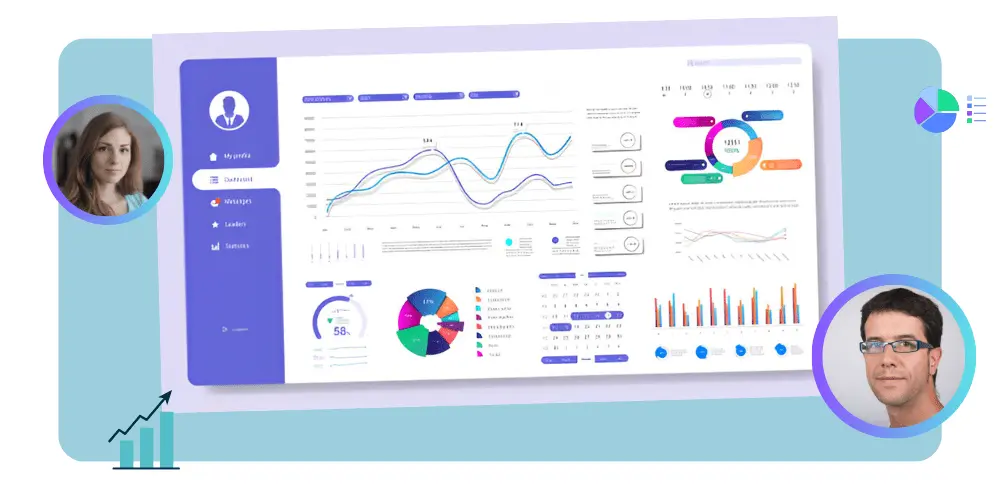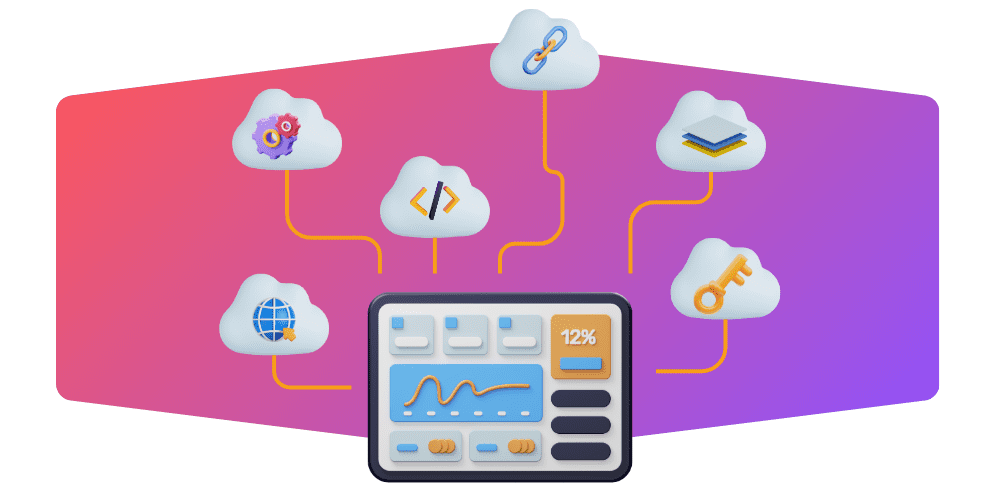Understanding Startup Capitalization Tables
Startup businesses struggle to get funding, but when they get to the point where investors are interested in investing, a lack of preparation can be a major reason for failure. We asked a large sample of different startups about the things they struggled with when they were seeking their first round of funding. The answers varied, but a few of the consistently recurring problems which we came across were as follows:
Businesses had trouble knowing where to start, what to prepare and how, what various terminologies being used meant, the types of investors or funds available, how to approach investors, what to offer in return for funds and how much, plus what to do once funding was received. Our in-house startup accounting specialists have been working hard to answer these questions which have been covered in different topics on our blog, how to create an effective capitalisation table was one such question which we have addressed in detail below.
The Capitalization Table
A capitalization table effectively helps lay a strong business foundation that can help startup owners conduct a compelling analysis of a firm’s percentages of ownership, equity dilution, investor information and equity value at every round of fundraising investment.
Keeping the importance of the capitalization table in mind and how every business owner should be aware of it, our article provides a step-by-step guide to developing and managing a cap table.
What do you need to know about a capitalization table?
A capitalization table is a snapshot at a point in time that shows the outstanding equities of a company and capital structure of a company and also reveals information about the ownership stakes of directors, investors and employees of the firm.
The percentage of ownership of every shareholder in the company is termed as ‘ownership stake’. The capitalization table helps understand what percentage of ownership a particular shareholder has in the company.

What is included in a capitalization table?
A typical capitalization table includes the company’s securities, also called shares, warrants, share classes (types of shares), options and the amount that has been invested so far. These transactions are critical because they help businesses understand who owns the majority of the business, the business’s liabilities due to equity held and the dilution that occurs when new shareholders are added. Learn about issuing shares in a limited company in our guide.
Thus, a capitalization table summarizes and organizes everything you need to understand about the company’s key shareholders and the percentage of shares held by each shareholder and also discloses information about equity dilution over time. ‘Equity dilution’ represents the reduction in existing shareholders’ ownership percentage of a firm in light of the firm issuing new shares.
This table provides an up-to-date record of everything a startup needs to have on its information checklist regarding shareholders, classes of shares, the price and voting rights that come after buying those shares.
You need to keep in mind that your capitalization table will changes every time a new shareholder is brought on board by issuing new shares, the figures related to the percentage of ownership and dividends will need amendments in the cap table. The cap table will also help a business assess the righs each shareholder has to dividends on a dividend declaration, this will help a company complete its obligations effectively.
Related: Your guide to understanding dividend taxation.
Why do startups need to start working on their capitalization tables?
Capitalization table is proven to be a very useful tool for organizational management, stock management, legal preparation and much more. Speak to an accounting firm to learn more about how you can utilize these capitalization tables for your company in a much better way if you are not already doing so.
The ownership information regarding every shareholder in the company is very critical to understand the business ownership structure and liabilities that arise due to this ownership structure. Building up capitalization tables requires consideration of multiple variables, and this might be one of the main reasons a capitalization table is created in the first place, that is, to allow startups to track their business ownership structure data.
We have listed down several reasons to illustrate the importance of maintaining the capitalization table for your company, let’s have a look:
- It attracts investment
Startups need to have sufficient funding in hand to launch their operations and get past their startup stages successfully. A well-maintained and updated capitalization table assists potential investors in deciding the control they can exercise on the company during the initial negotiations. Startups increase their chances of growth when they can get multiple investors on board who can inject the required amount of funding into your business.
- Makes the job easier for investors
One of the main reasons we advise startups to work on their capitalization table is to provide ease for investors, as these investors need the information to predict any potential equity dilution in the future by designing different scenarios. These tables also enable investors to understand their right to power that they can exercise over the company’s policies.
- Builds a relationship of trust
Employees need to know about the valuation of their company, along with the real-time value of their share options or equity stakes. A well-maintained capitalization table not only keeps employees aware of their company’s position but also helps to develop a relationship of trust between the various stakeholders.
- Source of valuable insights for negotiations
An up-to-date capitalization table can be a valuable source of providing historical insights into the factors that are considered essential for working out current business valuation. The most relevant up-to-date cap tables include information from the past that can make the negotiation for business valuation much easier. Not only this, but a capitalization table can serve as an extremely useful tool in every fundraising round to catch the attention of potential investors looking out for investment opportunities.
- Increases the credibility of your business
When you maintain your capitalization table regularly, you create opportunities for your legal team to work more effectively by providing them with information on your financial assets coupled with accurate and up-to-date facts about your organization. Making it easier for your legal team to present your company whenever called upon an inquiry. Moreover, your capitalization table is the complete representation of your company’s ownership and investment history for audit, which not only makes your legal position stronger but also increases the overall credibility of your firm.
Video: Understanding Capitalization Table
Watch the video to learn about key terms used in cap table analysis that every investor must understand.
The key elements of a capitalization table
Our article, as discussed earlier, will provide guidelines on how to create a useful capitalization table. However, before we proceed, we would like to shed light upon some factors that are deemed critical for its development. The elements can have a significant impact on the general share distribution and the number of shareholders you have in the company.
- Stock options
Stock options are a type of contract between a receiver and the business that compensates the receiver by offering them the choice to purchase or sell a fixed-price stock earlier or on the date specified if certain vesting conditions are met. The stock option issued includes the number of shares, the strike price (also known as the fixed price), the grant date, exercise data, the cost receiver and the vesting start date.
You need to remember that if any of the options from the compensation contract are exercised, your capitalization table will be affected and you’ll have to make adjustments accordingly.
- Convertible securities
Convertible securities are a type of security that can be converted from one form to another after investment. These types of securities offer low acceptable payoffs to investors because of the potential profit that can be earned when turned from one form to another. Preferred stock or convertible bonds are the most common type of convertible securities that can easily be converted into equity.
Since these stocks can be converted into equity, these derivatives can affect the company’s capitalization table.
- Stock warrant
Another critical aspect that can significantly affect the capitalization table is stock warrants. They are quite similar to stock options but provide the receiver with the right to purchase or sell security or equity at a fixed price before its expiration.
A warrant certificate is provided to the investors once the warrant is exercised,and similar to stock options, stock warrants also impact the company’s capitalization table.
- Restricted stock units
Restricted stock units are another type of employee compensation. This type of compensation is fully offered on the basis of performance goals and how one has achieved them. However, the issuance of these types of stock is only possible until their vesting is complete. This implies that share dilution does not immediately occur and might play a key role in bookkeeping and tax services.
We recommend that you be careful about the entire procedure, small mistakes can end up costing you a lot. Startup owners should know how to create and maintain a capitalization table, especially during the early funding and seed stage, or alternatively hire a competitive startup accountant or legal adviser.
We have listed down some of the fundamental aspects that startups should be well aware and careful about before working on their business’s cap table. Now that you have read and understood, we would like to shift the focus of the article towards the steps involved in the creation of an effective capitalization table.
A step-by-step guide to building a capitalization table
Companies typically use spreadsheets for the development of their capitalization table. The process is easy and straightforward, but it’s imperative to remember that the development of the cap table is one step, the real challenge arises when you are required to maintain it properly over time. The maintenance may become very frustrating for startup owners as the capitalization table involves the addition of more variables over time.
Many startups prefer seeking accounting services of an accountant to ensure that the cap table structure is accurately managed along with making sure that it’s highly effective. If you wish to create and maintain your first capitalization table all by yourself due to shortage of funds, then the steps listed below can provide you with proper guidance.
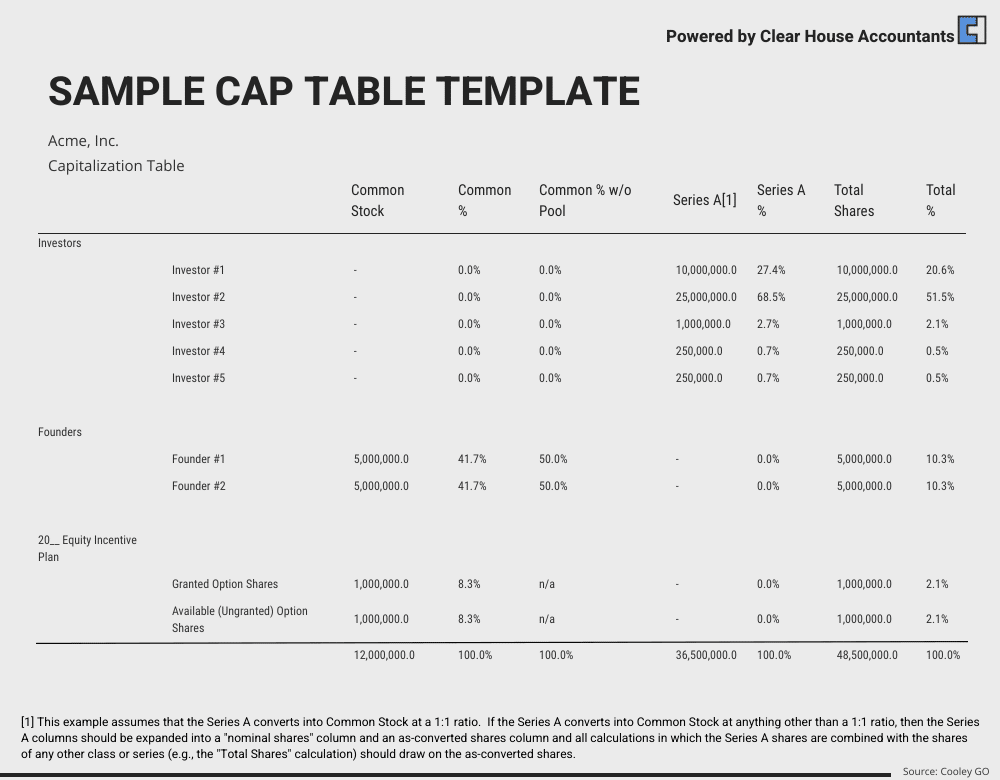
First step
The first step is simple; you just have to start working on the most commonly used capitalization structure by making use of spreadsheets. Ensure that your capitalization table holds accurate and up-to-date information. It must list all details regarding the ownership of shares along with outstanding shares
Second step
Following the standard capitalization table structure, you will be required to include all relevant details of your investors and shareholders. It should feature their names and the securities of the company they own. You can also utilize a spreadsheet template which makes the additional entries of essential figures, variable and business facts over time.
Third step
The first row of the table should indicate the total number of the company’s shares. The rows next to the first one should include authorized shares, outstanding shares, unissued shares and shares reserved for a stock option plan. Below are the different types of shares you need to include in your rows.
- Authorized shares
Authorized shares, also known as authorized stock or authorized capital stock, are those shares that can be issued legally by the corporation as per the articles of incorporation. The shares issued by public companies on the open market are mostly or entirely authorized shares.
- Unissued shares:
Unissued shares represent the percentage ownership of the company that is still in the hands of the directors; in other words, these are shares that have not yet been issued by the company. If the company has many unissued shares, then the board of directors of the company can quickly sell or issue those shares without seeking the approval of investors first.
Similarly, a company with very few unissued shares makes it difficult for the board of directors to issue more shares. It could also cripple the company’s capability to declare a stock dividend or stock split.
- Outstanding shares
Outstanding shares are the shares of an organization or corporation which investors issue and authorize. These shares are purchased and kept by the investors. These shares can be beneficial when working out critical metrics of the company like cash flow per share or earnings per share etc.
- Shares are reserved for a stock option plan.
These are the authorized or unissued shares that are kept aside for future planning. This usually happens when an enterprise raises its funding via preferred stock. During this point, the company may keep a specified number of authorized shares aside to ensure the conversion of the preferred stock into common stock in the future.
What other critical information does an effective capitalization table include?
Apart from the things we have discussed, your capitalization table must include other vital information about your business that may be useful in the execution of your company’s growth plan.
Our accountants have curated a list of key business information that you must include in a separate table as another component of your company’s capitalization table.
- Shareholder information: You will be required to enter the names of every shareholder who has purchased shares in your company.
- The number of shares owned: You must mention the number of shares every shareholder owns in the company.
- Stock options: Don’t forget to include the total number of stock options held by each shareholder in your firm.
- Unissued shares: You must also include the total number of unissued shares that can be utilized for the option pool later
How to avoid complications when maintaining your company’s cap table?
The addition of more variables in your capitalization table makes it more complex to manage; therefore, to avoid complications, you can create additional links to the primary table. Remember that almost every company has its trading structure and requirements that are unique from other businesses, so you must add separate links to your cap table according to your business structure. You can link the following subjects to your table:
- Investors table
- Shareholders table
- A vesting schedule
- Shareholders list for every type of stock
Key takeaway
This article has highlighted how important a capitalization table can turn out to be in the organizational management of a startup. Capitalization tables can play an influential role in the decision-making process. It might help you make better decisions regarding the percentages of ownership, equity value, business transactions and other aspects. We have continuously stressed the importance of maintaining the table and keeping it up-to-date so that any outdated or inaccurate information does not compromise the credibility of your company in front of potential investors.
A professional accountant may utilize technology to ensure the issuance of stocks and communication with your company’s shareholders effectively. Speak to a business advisor or a business accountant to overcome any resulting complications.
Clear House Accountants are expert accountants in London with years of experience in simplifying business processes, managing financial complications, working out taxes and ensuring compliance for businesses of all sizes.
















